Hughes H-4 Hercules: the only flight for the story
At the initial stage of World War II, the Allies did not immediately realize the fact that the submarines of Nazi Germany could become a serious threat and problem for them. The experience of World War I was safely forgotten by them, which ultimately led to truly catastrophic consequences in the form of huge losses in trade navy. If during 1939-1940 the number of transports sunk by the Germans did not go beyond the scope of losses acceptable for the war, then in 1941-1942 Krigsmarine managed to arrange a real terror in the Atlantic. German submarines acted on the vast expanses of the Atlantic with virtually impunity, so the delivery of goods and military equipment to Europe by sea became a very dangerous thing, only in the first 7 months of 1942 German submarines sank almost 700 different Allied ships.
The situation in the Atlantic managed to somehow straighten only by the end of 1942 of the year, and then with the help of a global increase in the number of covering ships. Despite these actions, the threat from the German submarines was not eliminated. In such conditions, the idea was born that would protect valuable military goods from Krigsmarine attacks. Cargo could be shipped across the Atlantic Ocean not only by water, but also by air. However, the implementation of this idea would be possible only if it were possible to create a transport plane of sufficient carrying capacity, which at that time did not have any of the parties. To solve this problem, shipbuilder Henry Kaiser proposed to design a large transport flying boat. A well-known billionaire and aircraft designer Howard Hughes volunteered to bring this idea to life, creating a giant aircraft, which still has no analogues.
In 1942, the US government signed a contract with Howard Hughes to build one prototype aircraft, infected by the idea of a large “flying vehicle” for the needs of the fleet. It was a multi-ton wooden amphibian with a wingspan of almost 100 meters. The new machine originally received the designation NK-1 "Hercules". The dimensions of this flying boat are impressive to this day, suffice it to say that in its fuselage more than 700 soldiers could fit in weapons and about 60 tons of commercial cargo. In order to provide this giant the necessary power in its wing provided for the installation of 8 engines. When developing this project, the goal was specified: to build an aircraft for cargo and passenger transportation so as to spend on it the smallest amount of strategic raw materials. Therefore, it was decided to build the aircraft not from aluminum, but from wood. It was planned that this flying boat would be used to transport troops and various cargoes from the United States to howling Europe along a safe air route, leaving out the German submarine fleet.
Working documentation for the new flying boat was developed very quickly, which cannot be said about the pace of aircraft construction. The works that began in the 1943 year were fully completed only in the middle of the 1947 year. This slowdown in the construction of the aircraft was influenced by several reasons, ranging from the end of the Second World War (as a result, the military lost interest in this car) and ending with various legal proceedings against Howard Hughes. All these judicial squabbles were rather colorfully presented in the film “Aviator”. Disputes about the amount of funding for this project continued throughout its implementation, but there was no unambiguous opinion about its necessity. One US senator dissatisfied with this project called the future amphibious aircraft a “flying forest warehouse”, but the aircraft’s most famous nickname was another — the Fir Goose. From the US state budget for the implementation of this project was spent a huge amount for those times - 22 million dollars. At the same time, these funds were not enough, due to insufficient funding, Howard Hughes additionally invested his own 18 million dollars into the project.
The flying boat, which by that time was renamed N-4 (after Henry Kaiser left the project, the N-4 became the fourth Howard Hughes aircraft of its own construction) made its first and last flight on November 2, 1947. The plane personally flew up to Hughes. The car made a small flight at an altitude of 21 meters, breaking through the air for two kilometers along the coast of Los Angeles. On this, the story of Hercules almost came to an end, from the category of flying samples aviation He almost immediately moved into the category of museum exhibits. Such an expensive and large flying boat turned out to be useless at that time.
The Hughes H-4 Hercules consisted of a hull, a cantilever wing and 8 radial engines. The flying boat had vertical and tail plumage, as well as fixed wing floats. The entire structure of the aircraft consisted of laminated wood, but contrary to the nickname in the construction of the flying boat was not used spruce, and birch. At the Howard Hughes plant, woodworking was able to raise to high aviation standards. Patterns of structural elements were made in full size, then matrices were made from which the parts were molded: the thinnest piece had a thickness of 1,2 mm and consisted of three 0,4-mm layers, and the thickest part had a thickness of 254 mm and consisted of two hundred 1,27-mm layers of veneer. In order to retain the veneer layers when gluing, they were joined together with nails with double caps, which, after the glue had hardened, were taken out with the help of a special “nail puller” (on the whole flying boat about 8 thousands of nails were gone). The holes from the nails were sealed with a special putty. After the assembly process was completed, a thin layer of primer was applied to the surface, followed by a layer of rice paper and a protective lacquer 2 layer. The outer surfaces of the aircraft were painted with “aluminum” paint. When looking at this flying boat, no one could even think that the basis of the aircraft design is an ordinary tree. Not only the skin of the aircraft, but all the power elements of the design looked as if they were made of aluminum.
The cargo compartment of the amphibian was a two-level, the levels were connected with each other by means of a spiral staircase. Through the hinged doors, which were located in the nose of the car, two railway cars or the Sherman M4 tank could easily pass. At that time, the Hughes H-4 Hercules was the only aircraft that was able to transport the tank through the air. In the best traditions of submarines and ships, 18 sealed compartments were provided in the design of a seaplane (there were enough 6 of them to keep afloat). The electrical equipment of the aircraft operated from direct current with voltage 120В, since with traditional 24В the cross section of the wires, the length of which reached 50 km, was very large.
The seaplane was to be lifted into the air by 8 huge radial air-cooled R-4360 Wasp Major piston engines from Pratt & Whitney, each of these engines developing 3000 hp. The engines rotated five-meter four-blade propellers. Four engines, which were closer to the fuselage, could create reverse thrust, so the giant aircraft had the unique ability to independently move back and make a turn in place. It was just that the huge size of the flying boat made it possible to repair the engines even in flight, since it was possible to get to the engines through special passages made inside the huge wing. The height of the wing section at the point of attachment to the fuselage reached 4 meters. Despite all its unprecedented size, a crew of only three people was required to fly the aircraft.
The flying boat of Hughes and Kaiser was to become the largest aircraft ever built (in fact, it 7 times surpassed any aircraft built before him) and become one of the most unusual projects in aviation history. Only the dedication and courage of Howard Hughes and his team of like-minded people, who despite all the circumstances did not abandon their idea and still sent H-4 Hercules to the only flight that went down in history, helped bring the work to build the aircraft to the end.
At some point, the work on the project is very tough identified contradictions between its leaders. Henry Kaiser was in favor of limiting himself to the construction of an 70-ton apparatus in order to meet the deadlines and present the finished product to the military, but Howard Hughes insisted on building an 200-ton airplane that required much more money and time. As a result, Henry Kaiser simply left the project, and Hughes, on the contrary, became more and more fascinated by this idea, introducing in the aircraft design all the new improvements and proposals that further delayed the construction of the flying boat. As a result, in 1942, this order was urgent for the US government, and by 1944, it lost its relevance. By this time, the situation on the fronts of World War II had changed radically and the state’s interest in the project gradually faded away. The US government even wanted to cancel the contract for the construction of a seaplane, but at that time Hughes’s motivation had ceased to be just rational, rather the aviator was obsessed with the idea of building a cargo aircraft that would surpass even the wildest fantasies of his contemporaries.
2 November 1947 of the Year “Hercules” was launched and Hughes, together with his small crew, launched the aircraft engines for the first time. Having performed several test runs on the water in front of numerous viewers, mainly journalists, who were watching the plane move, the flying boat broke away from the surface of the Los Angeles harbor and set off on its first and last flight, which was not even announced. At a small height that did not exceed 20 meters, the flying boat flew about two kilometers at a speed of 120 km / h, after which it made an ideal landing. This test flight, which Howard Hughes made with the official ban on raising the plane into the air, had to repel numerous critics of the project, proving that the largest aircraft in the history of mankind still knows how to fly. Many still attribute this flight to one of the most important moments in the history of world aviation.
Having accomplished its historic flight, the Spruce Goose returned forever to its hangar - a giant room specially built for it, so that it would never rise into the sky again. At the request of Howard Hughes, until his death in 1976, the state of the flying boat was constantly maintained in full "alert", including the launch of engines every month. The condition of the car up to 1950-s was monitored by 300 people. Later, the staff was reduced to 50 people, but even then the annual cost of maintaining this air giant in flying condition reached one million dollars, and the construction of the hangar, in which Hughes H-4 Hercules rose to eternal parking, cost about two million dollars.
Currently, this unusual aircraft is an exhibit of the Aviation Museum in McMinnville (Oregon), where it was transported in 1993 year. At the same time over the past 50 years, this flying boat has become one of the most beloved artifacts of the United States, moving from a state of virtually total uselessness to the category of objects of cultural heritage. Nowadays, the history of this aircraft, which only once in its career has risen to the sky, is perceived as an example of its author’s unprecedented determination to bring the matter to a close, turning Hughes H-4 Hercules into one of the symbols of the 20th century. Every year, this plane is visited by more than 300 thousands of tourists.
Flight technical characteristics of Hughes H-4 Hercules:
Overall dimensions: length - 66,45 m, height - 24,08 m, wing span - 97,54 m, wing area - 1061,88 m2.
Maximum take-off weight - 180 tons.
The payload mass is up to 59 tons, up to 750 soldiers in full combat gear.
Power plant - 8 Pratt & Whitney R-4360-4A engines of 3000 hp each. each.
Maximum speed - 565 km / h.
Cruising speed - 407 km / h.
Flight range - 5634 km.
Practical ceiling - 7165 m.
Crew: 3 person.
Information sources:
http://masterok.livejournal.com/410869.html
http://www.airwar.ru/enc/sea/hercules.html
http://www.popmech.ru/technologies/12013-samolet-ambitsiya-govarda-khyuza-aviatsiya/#full
http://avia.pro/blog/hughes-h-4-hercules-govard-hyuz-i-ego-gigantskaya-lodka
Open source materials
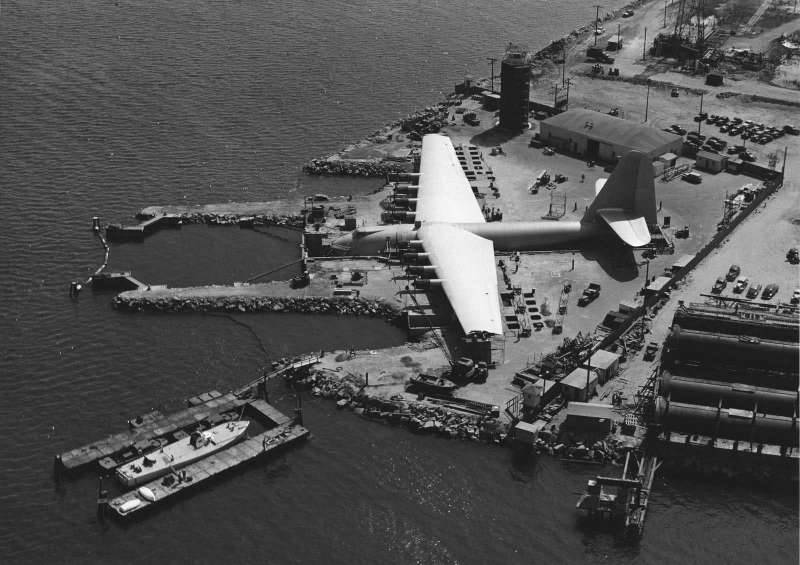
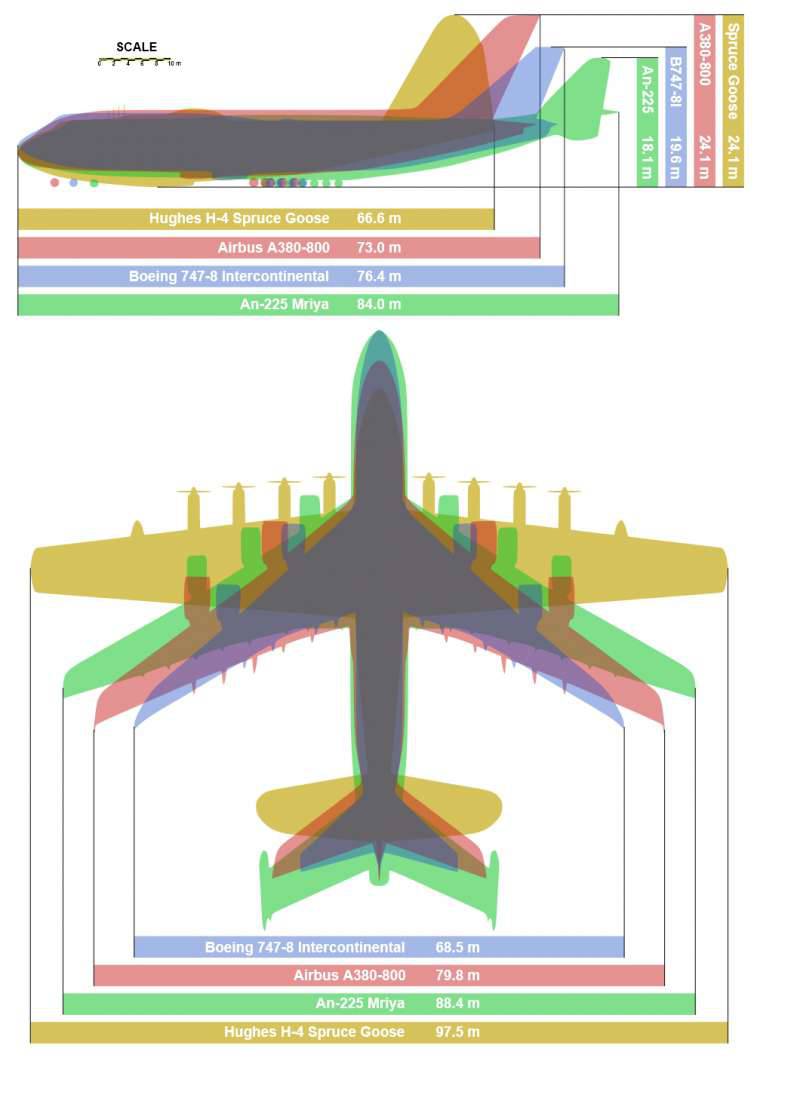
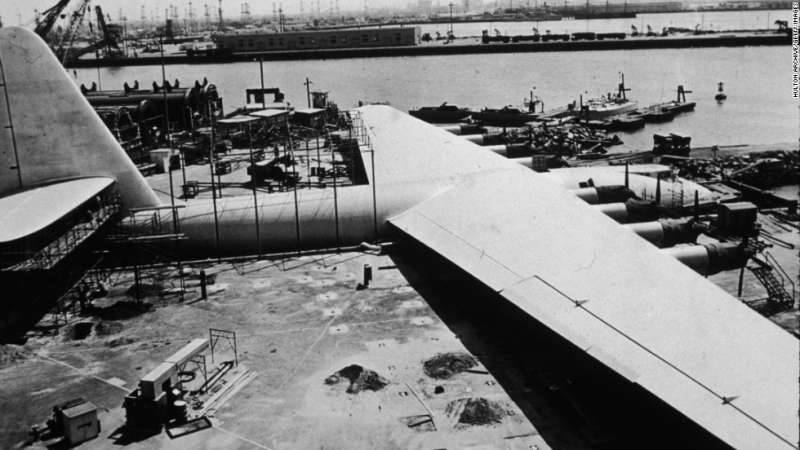
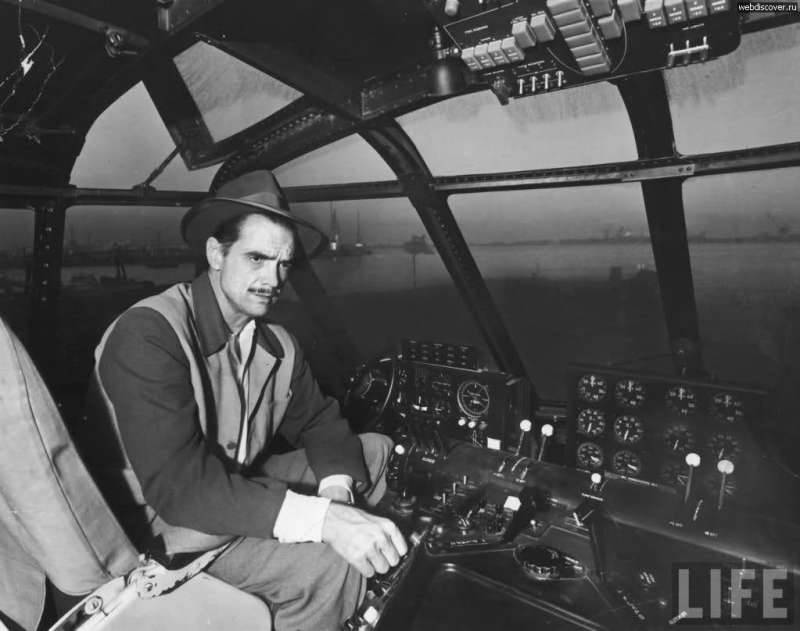
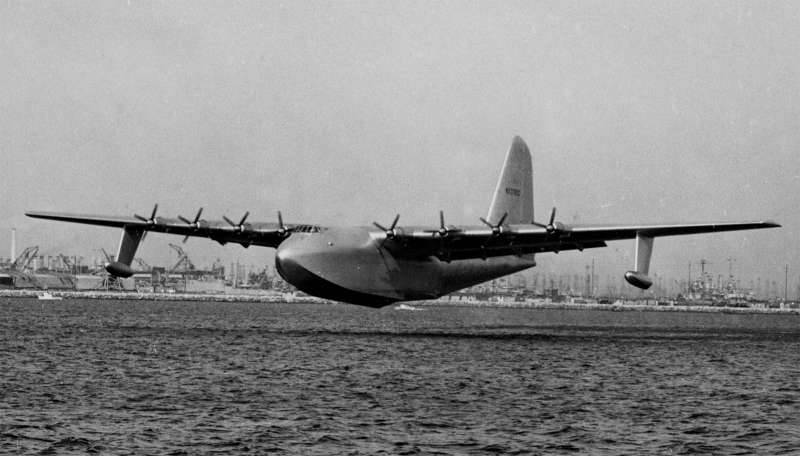
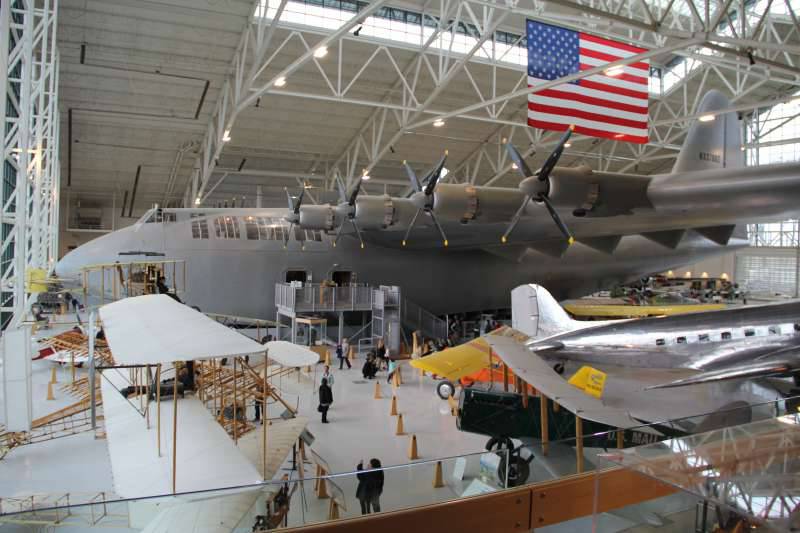
Information